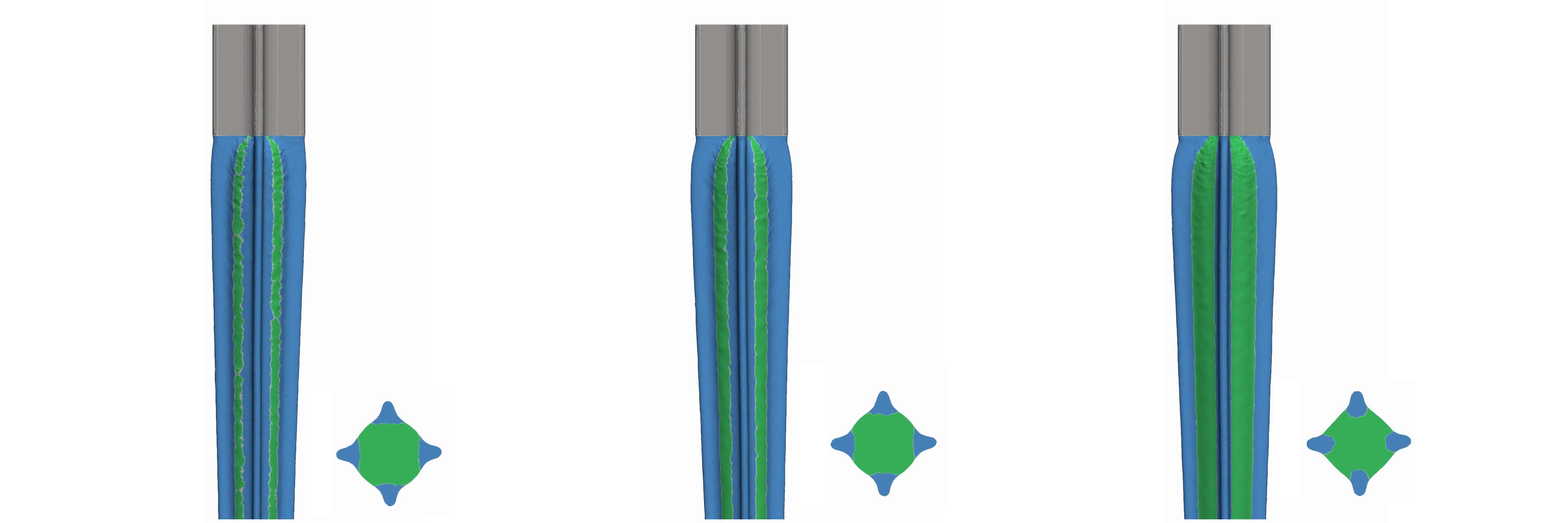Not all fibers are round. But how do you make it run round anyway and spin a plastic fiber with a cloverleaf-shaped cross section, for example? A team from our department »Transport Processes« develops simulation methods for such complex tasks – our established software solutions MESHFREE and VISPI are used here.
Today, everyday life without plastic fibers is unthinkable. We encounter them in almost all areas of life, whether in an oil filter or in a nonwoven medical face mask - and their composition varies depending on their function. In essence, however, they all depend on the fibers on a small scale and the production process on a large scale.
In spinning processes for the production of synthetic fibers, molten or dissolved mass is forced through fine nozzles and spun into fibers. These are usually passed through an air flow for curing. Known processes are melt spinning or dry spinning. What they all have in common is that it is always a demanding process in which all components must interact optimally. That is why our department »Transport Processes« has already developed software solutions that virtually map the spinning process as a digital twin. Such simulations save manufacturers cost- and time-intensive experiments, allow new insights and enable systematic parameter variations, which then support product design.

